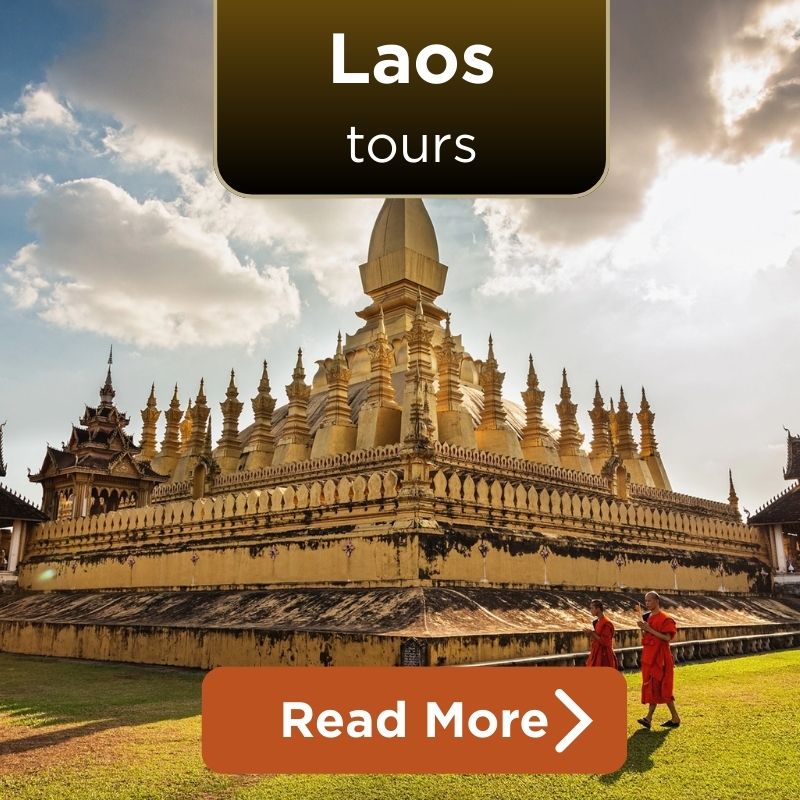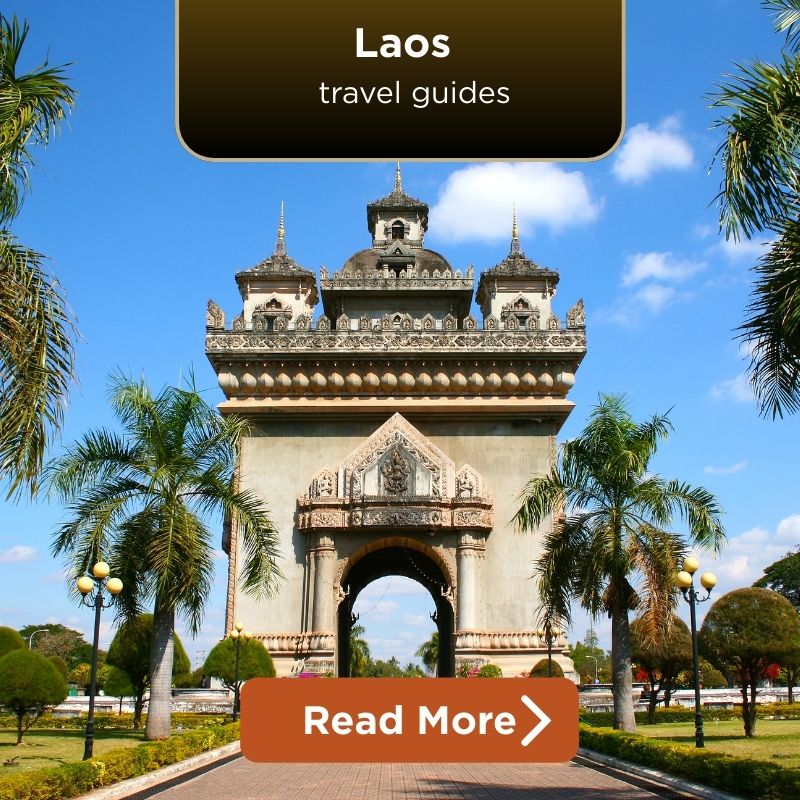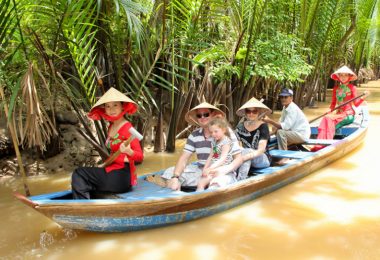Must-See Landmarks & Cultural Sites in District 5 Ho Chi Minh City
Thien Hau Temple (Tue Thanh Assembly Hall)
- Address: 710 Nguyen Trai Street, Ward 11, District 5 Ho Chi Minh City
- Opening Hours: Daily, 6:00 AM – 5:30 PM
- Entry Fee: Free
Those in District 5 Ho Chi Minh district, often consider the famous Thien Hau Temple as the most renowned spiritual destination to worship the sea goddess, Mazu. This temple was constructed in the late 18th century by Cantonese settlers and features classic Chinese architecture from the curved roof to the intricate wood carvings and colorful ceramic figures.
The ambience here is surreal, hanging above, giant spiral incense coils, slowly burning, carrying the prayers of devotees. March 3rd, lunar month 23, during the Mazu Festival, there are lively temple ceremonies and local piety.

Thien Hau Temple (Source: wikipedia)
Nghia An Assembly Hall (Ong Pagoda)
- Address: 678 Nguyen Trai Street, Ward 11, District 5 Ho Chi Minh City
- Opening Hours: Daily, 6:00 AM – 5:00 PM
- Entry Fee: Free
Constructed by the Teochew community in the 19th century, Nghia An Assembly Hall is one architectural gem devoted to Guan Yu, the Chinese deity of loyalty and righteousness. The vast wood columns, ornate altars, and impressive calligraphy make evident the work of a previous generation of craftsmen.
The temple is a focal point in the lantern festival and Guan Yu’s birthday (June 24 – lunar calendar), guiding thousands of local citizens and visitors every year. A highlight of Ho Chi Minh City that cannot be missed.
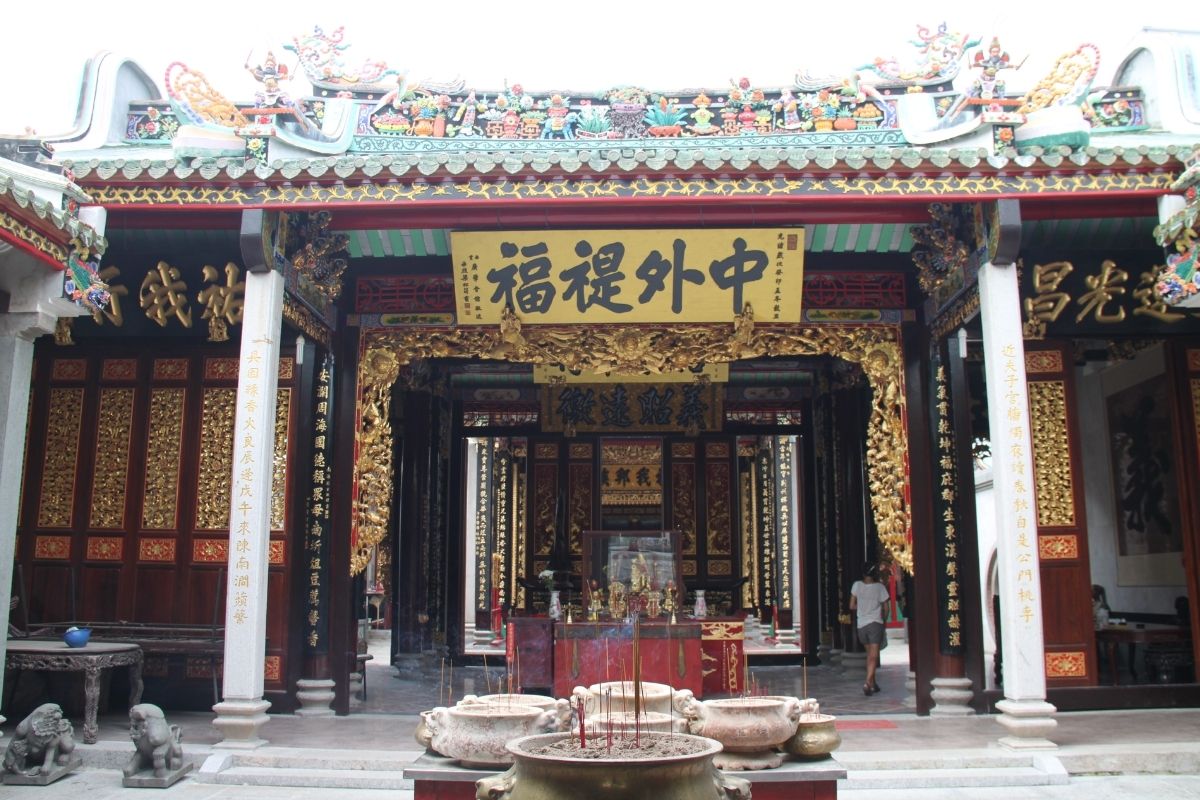
Nghia An Assembly Hall (Source: wikipedia)
Uncle Ho’s Memorial House (House No. 5 Chau Van Liem)
- Address: 5 Chau Van Liem Street, Ward 14, District 5 Ho Chi Minh City
- Opening Hours: Weekdays, 8:00 AM – 11:00 AM & 1:30 PM – 4:00 PM
- Entry Fee: Free
Before Ho Chi Minh became the international face of Vietnam’s anti-colonial struggle, he resided in a modest townhouse from 1910 to 1911. The site is now a national historical relic restored as a museum and pays great tribute to his early revolutionary life there.
Inside, visitors will discover a memorial altar, old photographs, and exhibits on the revolutionary organization he was associated with, the Lien Thanh Company. It’s a rare, intimate, and tender look into the hushed origins of Vietnam’s most iconic leader.
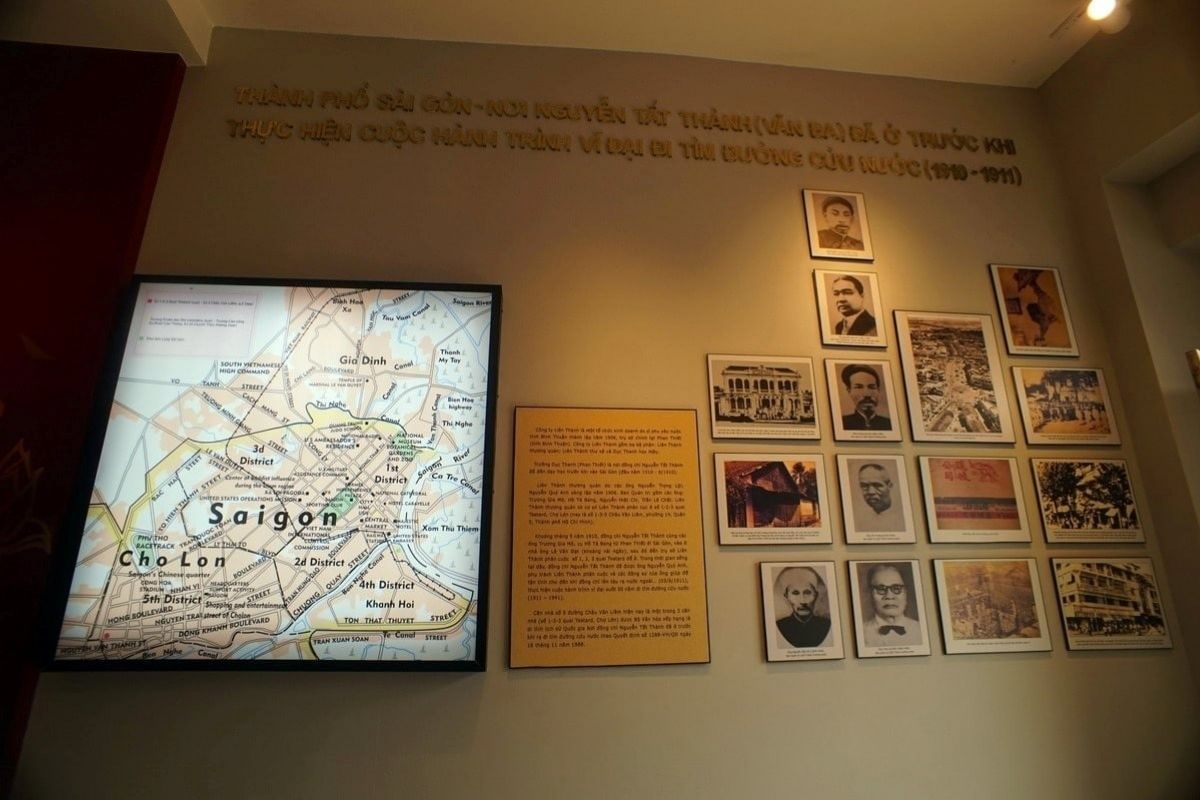
Uncle Ho’s Memorial House (Source: doanhnhansaigon)
Cho Quan Hospital Prison
- Address: Inside the Hospital for Tropical Diseases, 764 Vo Van Kiet Street, Ward 1, District 5 Ho Chi Minh City
- Opening Hours: Weekdays, 8:00 AM – 4:00 PM
- Entry Fee: Free
This somber place, built in 1864 by French colonists as a hospital, became in later decades a prison for political dissidents, including Tran Phu, the first General Secretary of the Communist Party of Vietnam. Today, it is part of the Hospital for Tropical Diseases, but one wing is still maintained as a memorial.
You can still gaze at original chains, prison platforms, and hand-written revolutionary slogans, silent but potent reverberations of sacrifice and resilience that helped make the nation.
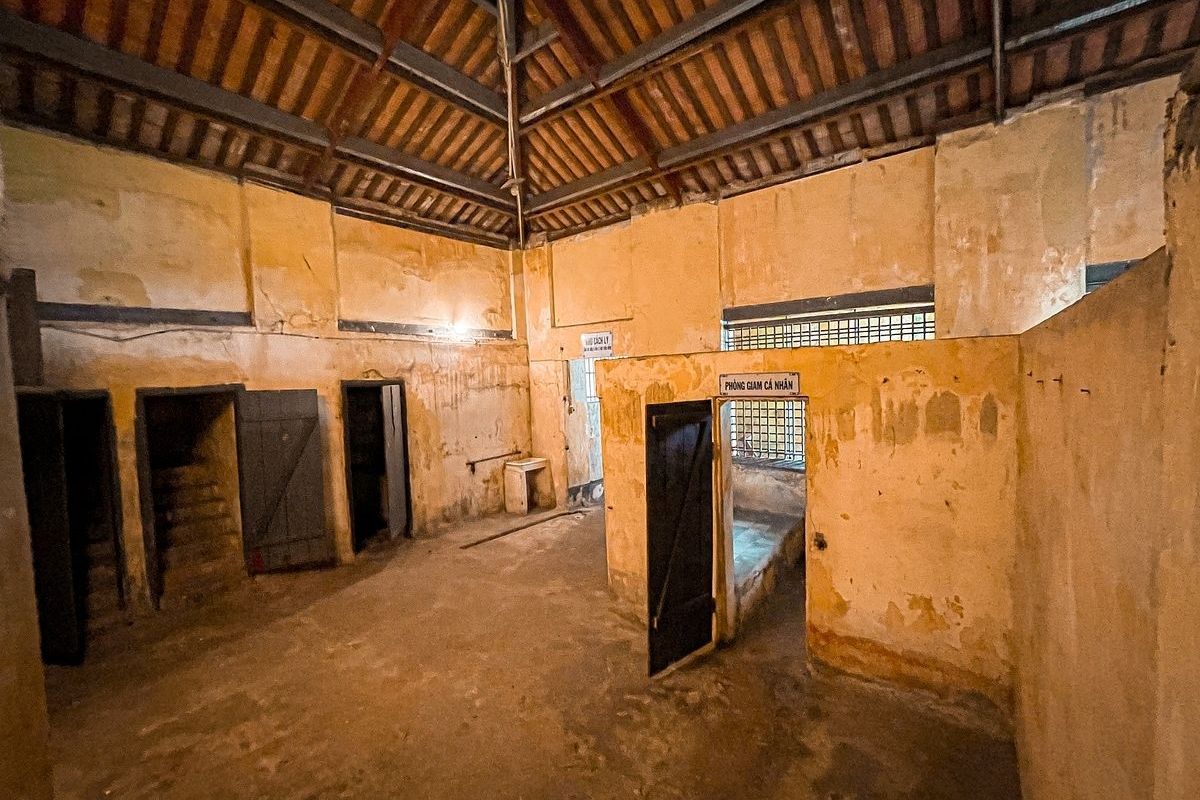
Cho Quan Hospital Prison (Source: saigoneer)
Minh Huong Communal House
- Address: 380 Tran Hung Dao Street, Ward 11, District 5 Ho Chi Minh City
- Opening Hours: 8:00 AM – 12:00 PM
- Entry Fee: Free
Visit a peaceful refuge that used to be the spiritual and social soul of Chinese residents of Saigon – Minh Huong Communal House. This sanctuary was constructed more than 230 years ago by the Minh Huong (or Chinese-Vietnamese) inhabitants and remains an impressive mix of Chinese and Vietnamese construction.
You can’t help but admire the signature five-compartment structure with tiled roofs, wooden beams, carved altars dedicated to local gods and ancestors. It contains ornate rooftop sculptures inspired by folklore, such as the Carp Transforming into a Dragon, mixing art and legend. Walking through the stage, main hall, and rear chamber, you’ll sense the tranquil chi of centuries past, a must-see cultural site in District 5 Ho Chi Minh.
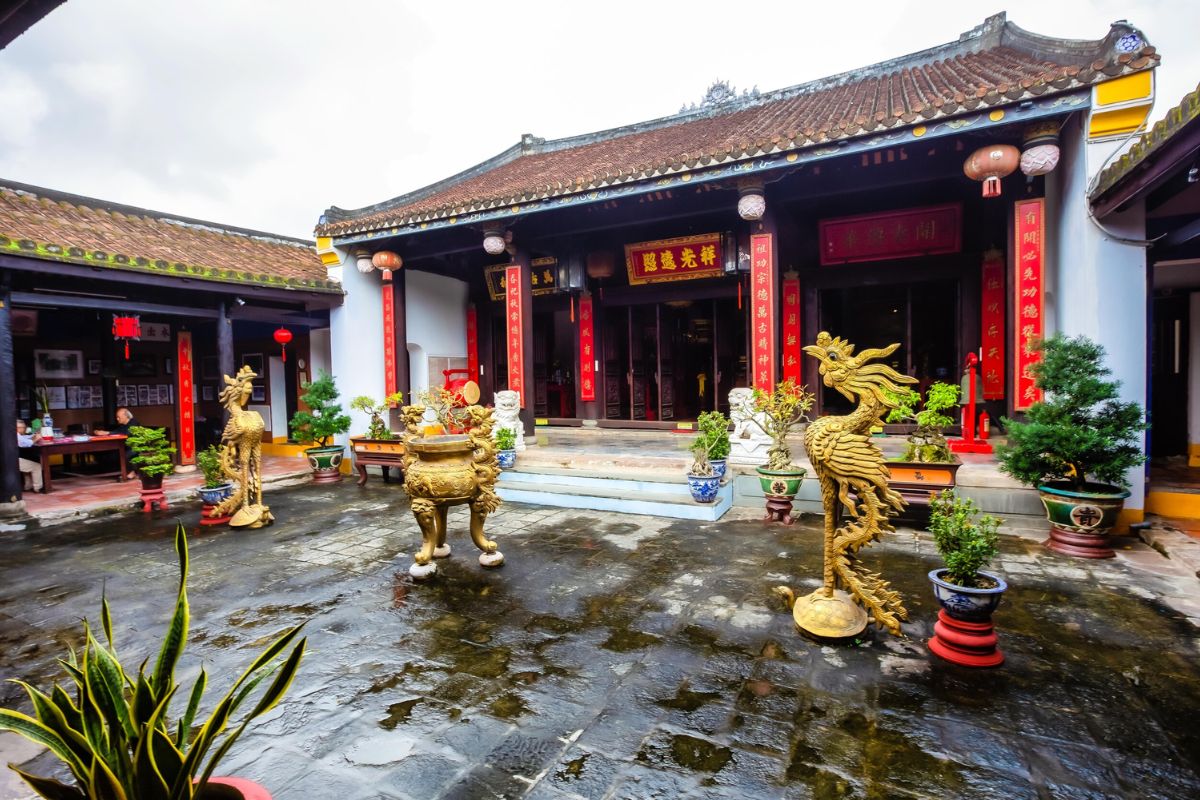
Minh Huong Communal House (Source: goteamjosh)
Van Phat Pagoda
- Address: 66/14 Nghia Thuc Street, Ward 5, District 5 Ho Chi Minh City
- Opening Hours: 7:00 AM – 7:00 PM
- Entry Fee: Free
Prepare to be amazed! One of these is Van Phat Pagoda, hidden in the heart of the thriving jewellery district and a little-known gem that will astound visitors with a wall of more than 10,000 golden Buddha statues. It’s certainly one of the most beautiful temples in District 5 Ho Chi Minh, and a peaceful spot to breathe, reflect, and gain a sense of the great breadth of spiritual devotion.
Inside, the space is calm and sacred. With its imposing altars the elaborate lanterns, and icons, this pagoda coaxes you into relaxation and an atmosphere of meditation. Practising Buddhists or curious travellers, whatever the case may be, Van Phat is a shining emblem of peace and unity that deserves a place among the highlights of Ho Chi Minh City.
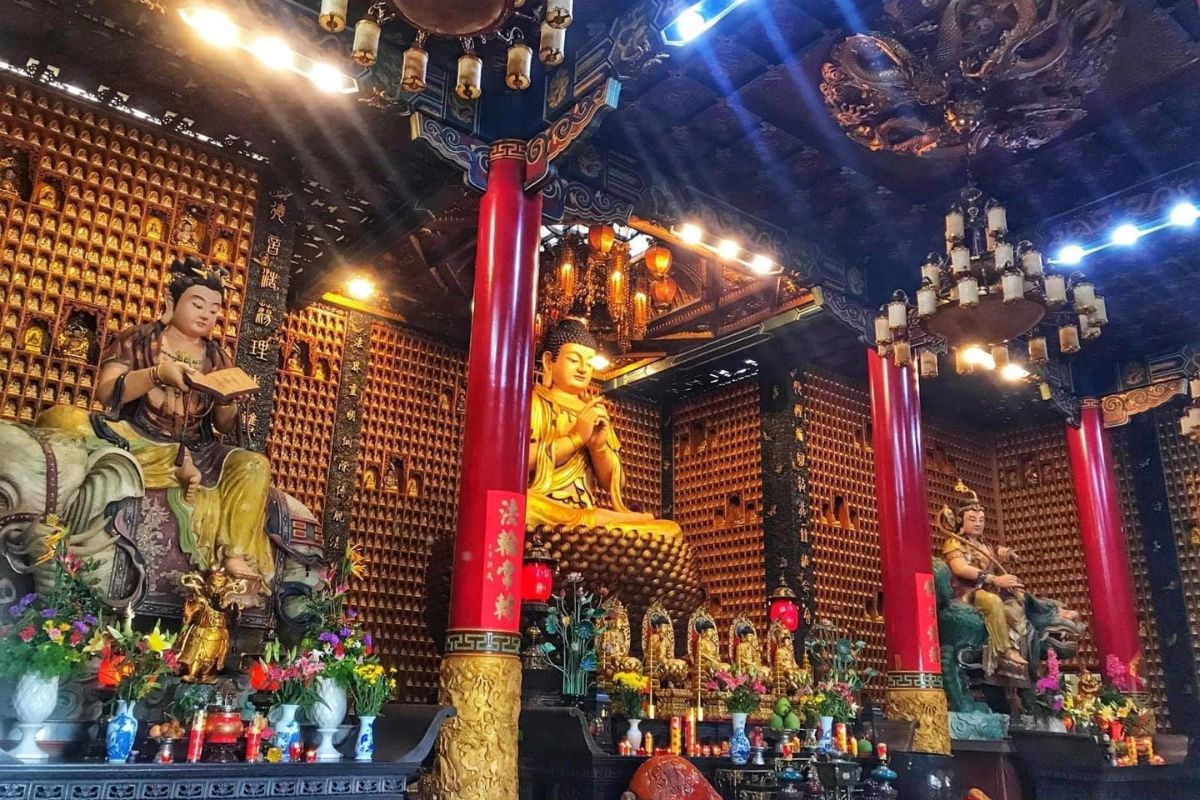
Van Phat Pagoda (Source: laodong)
Thien Ton Pagoda
- Address: 117/3/2 An Binh Street, Ward 6, District 5 Ho Chi Minh City
- Opening Hours: 7:00 AM – 12:00 PM & 2:00 PM – 8:00 PM
- Entry Fee: Free
A temple where religion and revolution were once deeply intertwined, Thien Ton Pagoda is not merely a temple; it’s a chapter in Vietnam’s modern history. In the resistance period (1955-1960), this pagoda was used as a secret base of the Saigon-Gia Dinh Special Zone Committee, where revolutionaries were protected and provided food, medicine, and munitions to the revolutionaries.
Today, the temple has been restored to its tranquil Buddhist role, providing a refuge for people along with spiritual inspiration. Inside, not only have religious relics been preserved, but items from the revolutionary era as well, granting the space its rare wealth of sorrowful significance. It’s a one-of-a-kind double symbol of national pride and spiritual continuance located in the heart of District 5 Ho Chi Minh City.
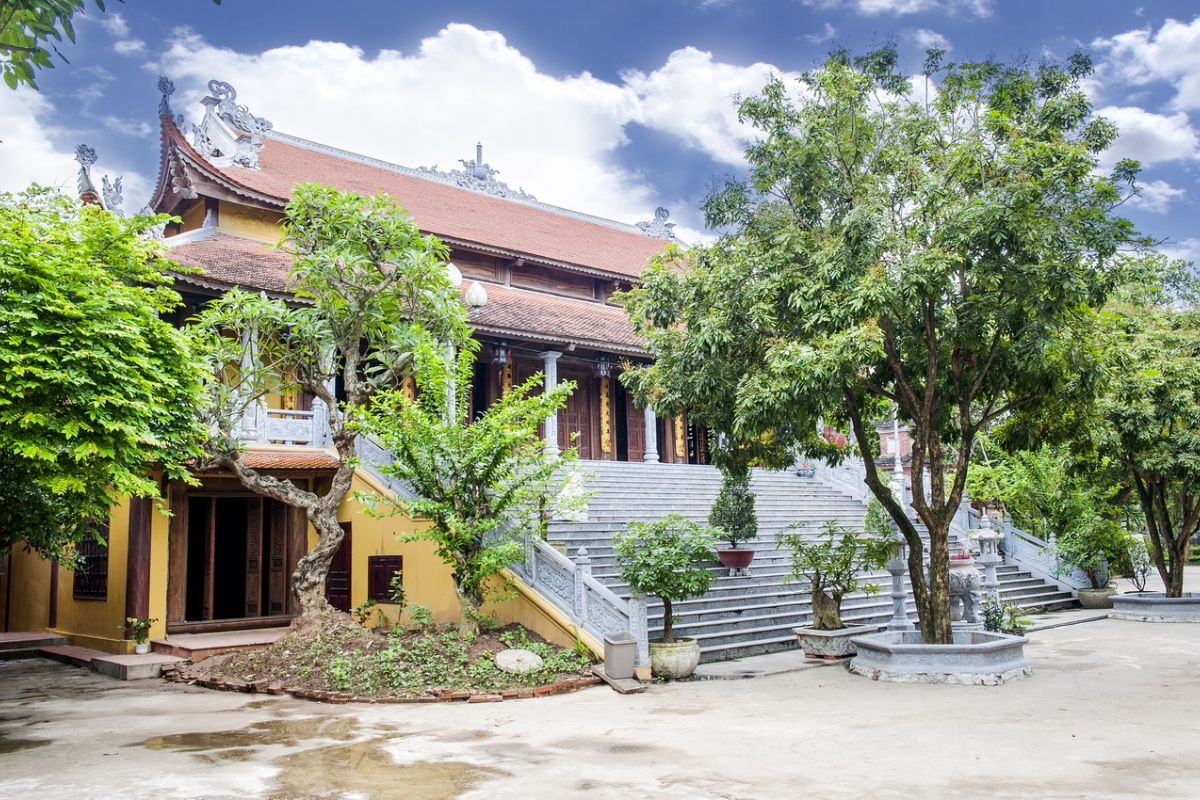
Thien Ton Pagoda (Source: ttvhq5)
Food Culture: What (and Where) to Eat in District 5 Ho Chi Minh City
Dim Sum & Chinese Specialties
The heart and soul of District 5 Ho Chi Minh City, is dumplings – plump, steamy, full of flavor. Here are three iconic places you can’t miss:
Tien Phat Dimsum – 18 Ky Hoa Street: After more than 20 years in business, this intimate, Hong Kong-style establishment has earned a reputation for making the city’s best pork and crab dumplings. The steamers will fly out of the kitchen faster than you can say “har gow!
Baoz Dimsumin – 82-88 Nguyen Tri Phuong Street: Sleek and modern and packed with locals, Baoz features a complete dim sum spread from xiao long bao to shrimp wontons. Ideal for families or foodies who want a side of comfort on their plate.
Dim Tu Tac – 29B Tran Hung Dao Street: If you are craving top-notch Cantonese fare, visit this place for its exquisite dumplings, succulent roasted duck, and stir-fried hand-pulled noodles that will transport you to Guangzhou.

Dim Sum at Tien Phat Dimsum (Source: digiticket)
Street Food Spots and Night Markets
Phung Hung Night Market
- Phung Hung Street, Ward 14
- Open: Late afternoon to midnight
The market has been around for more than 70 years, and it’s a paradise of sizzling woks, smoky skewers, and bubbling broths. Give yourself a gift and order the stir-fried clams with lemongrass, the grilled pork buns, and homemade che (sweet soup) – all beneath glowing lanterns in a busy room.
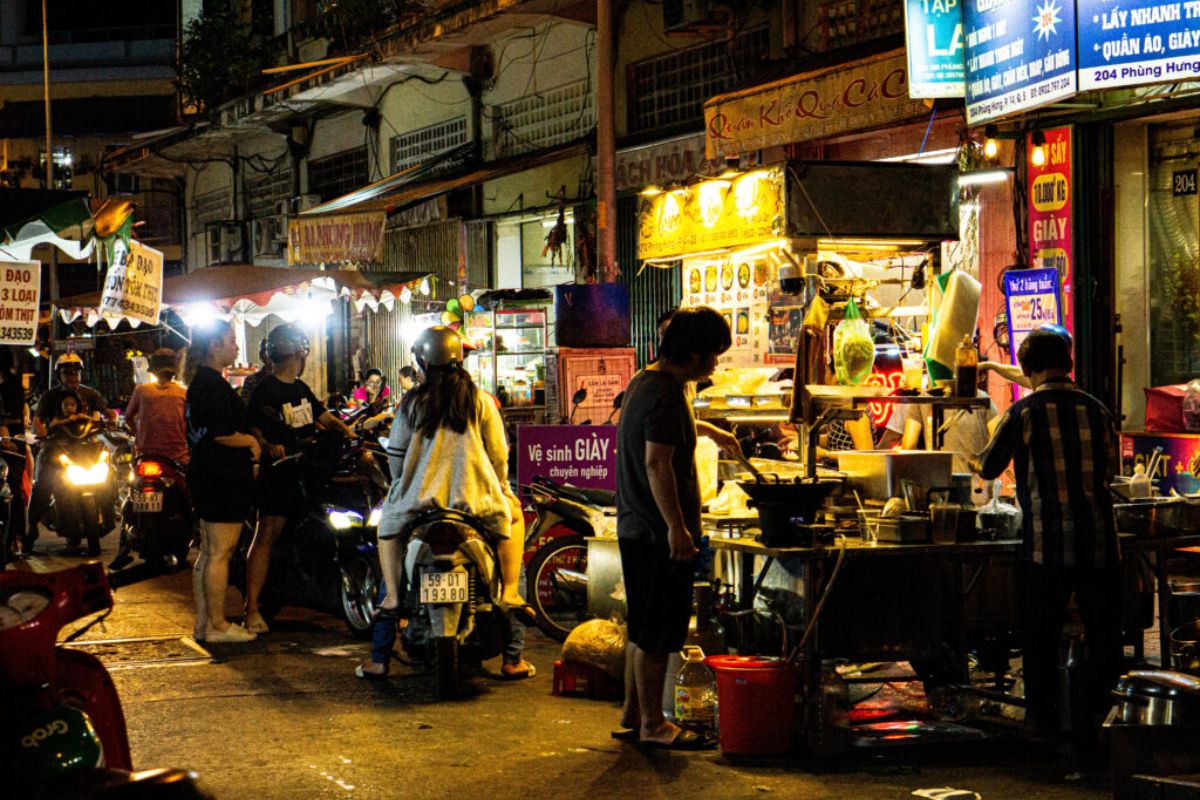
Phung Hung Night Market (Source: jackfruitadventure)
Cao Dat Night Market
- Cao Dat Street, near Chau Van Liem intersection
- Open: 5:00 PM – 11:00 PM
This one’s a sensory explosion. Scents of roasted duck, crab soup, and tofu pudding drift by as vendors hawk specials. For living like a local, this is the place to go: elbow to elbow with local Saigonese families and hungry night owls.
These night markets aren’t just food places – they are a cultural theater, it’s where you’ll feel the pulse of District 5 Ho Chi Minh City, they are serious Ho Chi Minh City must-sees.
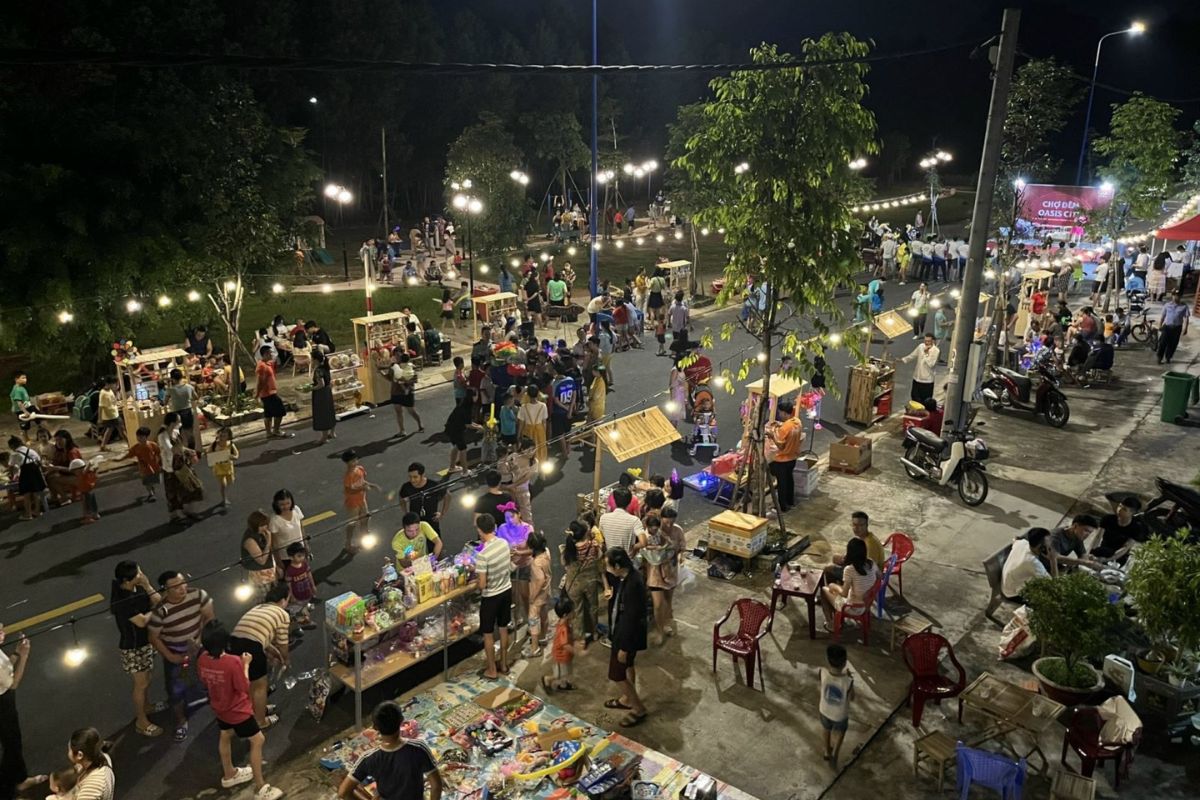
Cao Dat Night Market (Source: sni)
Hidden Food Gems & Sweet Soups
Co Lan Crab Soup – 239 Luong Nhu Hoc Street: A warm taste of Vietnam Tradition, having a limited menu and popular hot spot for crab soup; they have a simple storefront, a boiling pot, and the most addictive crab soup in town. Smooth broth, soft meat, quail eggs, and coriander – it’s a comforting classic.
Ha Ky Sweet Soup – 138 Chau Van Liem Street: The shop offers over 15 traditional Vietnamese-Chinese sweet soups, so it’s a great place to try the many different versions. Start with the lotus seed longan, or the black sesame tofu – sweet, airy, and soul-soothing.
Kaya Sticky Rice – Tran Phu Street – 451 Tran Phu Street: Go there early in the morning (Their sticky rice usually runs out by 9:00 am). Hot sticky rice. Pandan kaya (coconut egg jam). Crisp fillet-skirted fried shallots. It’s both breakfast and dessert in a single glorious bite.
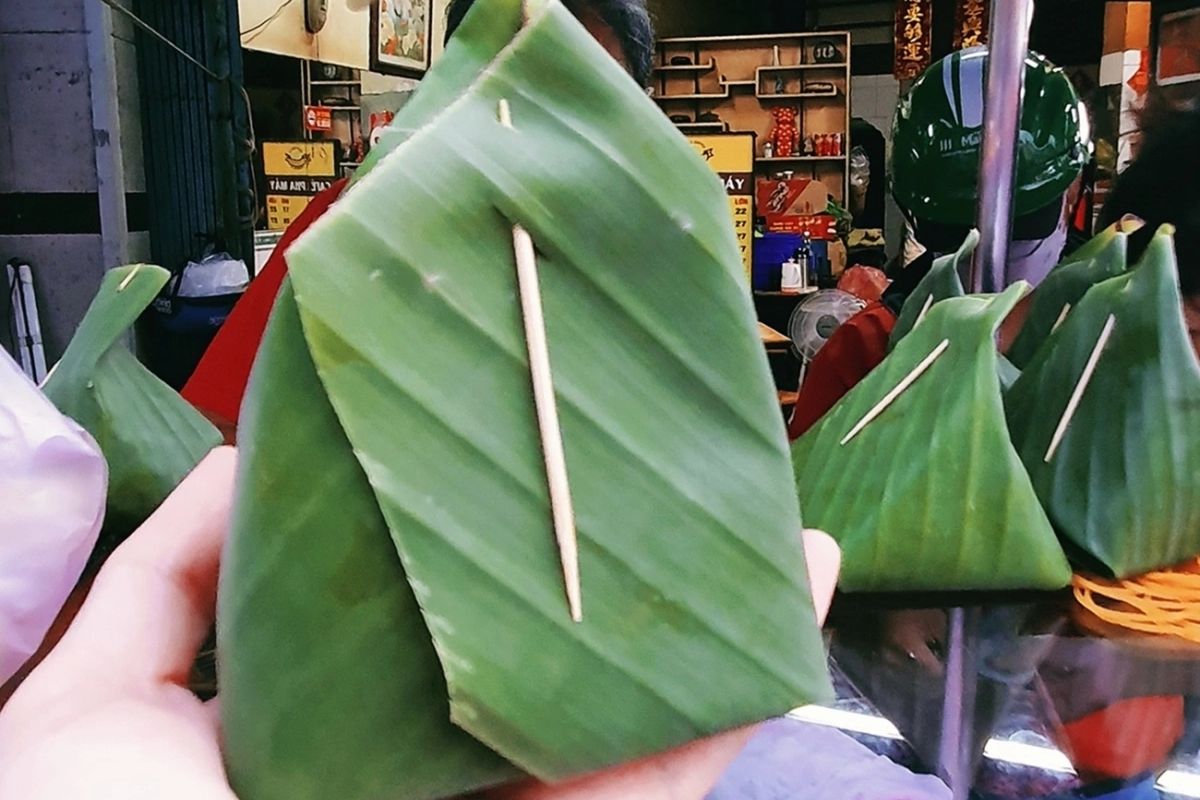
Kaya Sticky Rice – Tran Phu Street (Source: mautam)
Living Traditions & Local Culture in District 5 Ho Chi Minh City
Nguyen Tieu Festival (Lantern Festival)
- Date: 15th day of the 1st lunar month (typically February)
- Location: Along Chau Van Liem, Luong Nhu Hoc, and Lao Tu Streets
This is the largest-scale event of the Chinese-Vietnamese community. Look for a riot of red lanterns, lion dances, ancestral offerings, and colorful parades. In temples like Nghia An Assembly Hall and Nhi Phu Temple, ceremonies bring out crowds, and the night can be one of the most lively and photogenic in District 5 Ho Chi Minh City.
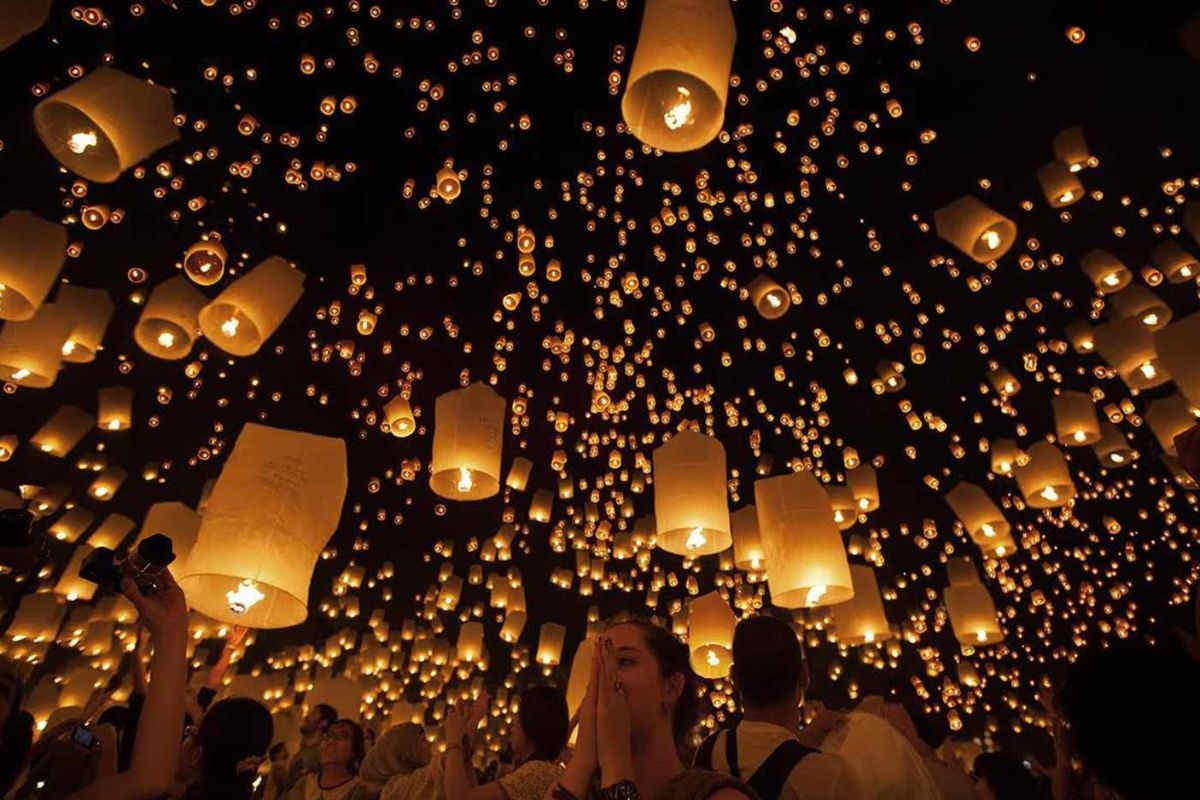
Nguyen Tieu Festival (Source: laodong)
Thien Hau Temple Festival
- Date: 23rd day of the 3rd lunar month
- Location: Thien Hau Temple (Tue Thanh Assembly Hall), 710 Nguyen Trai Street, Ward 11
This festival is a celebration of the sea goddess Mazu, with offerings, traditional rites, and music. Followers clean the temple for days in advance and come in large numbers on the day of the festivity.

Thien Hau Temple Festival (Source: reviewvilla)
Ong Bon Festival
- Date: 15th day of the 1st and 8th lunar months
- Location: Nhi Phu Assembly Hall, 264 Hai Thuong Lan Ong Street, Ward 14
Ong Bon, the tutelary god of protection and prosperity, is feted with incense and lion dances and the prayers of thousands of gathered community members – an expression of the spiritual depth of the district.
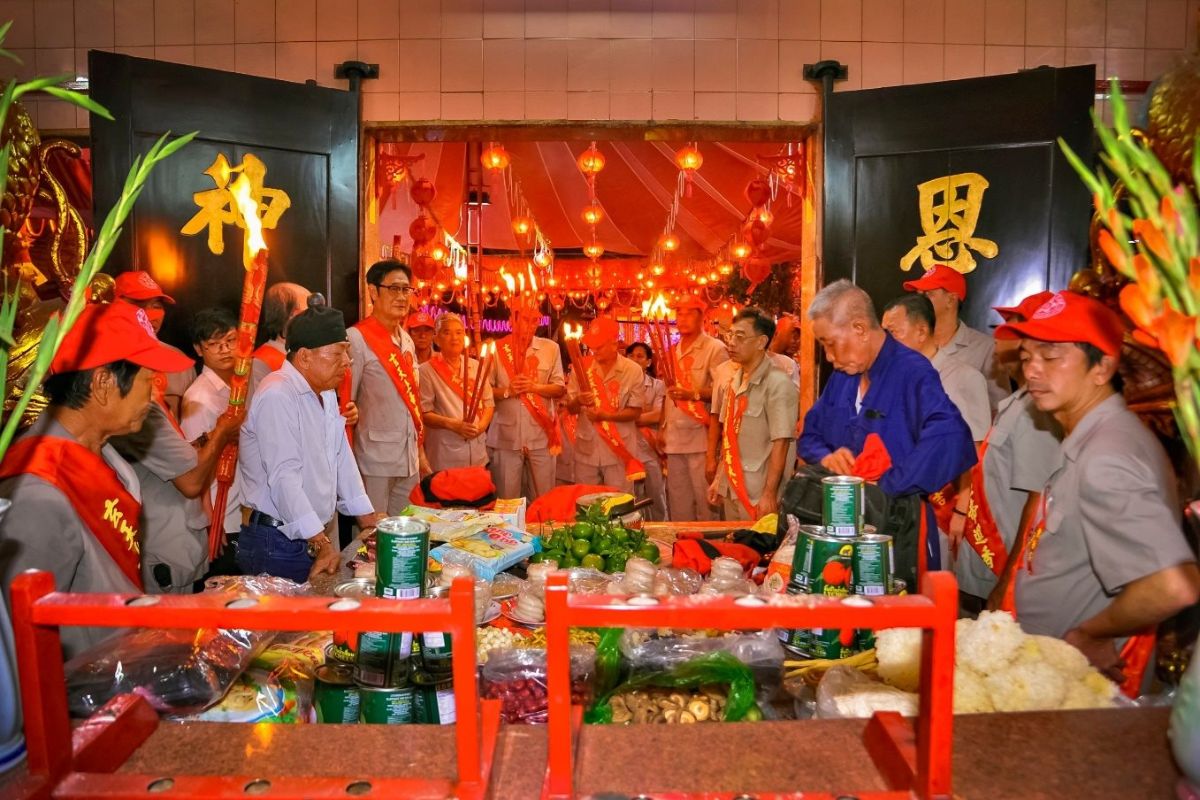
Ong Bon Festival (Source: crystalbay)
Jewelry Craft Festival in District 5 Ho Chi Minh City
- Date: 6th-8th day of the 2nd lunar month
- Location: Le Chau Assembly Hall, 101 Trieu Quang Phuc Street, Ward 10
This special festivity is a showcase of the artistry of the City’s goldsmiths. Witness traditional jewelry-making techniques, meet artisans, and admire delicate works that have been handed down for generations.

Jewelry Craft Festival (Source: laodong)
Traditional Medicine Streets in District 5 Ho Chi Minh City
If you’ve ever wondered what “traditional” Chinese medicine looks like in the flesh, then District 5 Ho Chi Minh City, is the most authentic you’ll ever see live in Vietnam.
Hai Thuong Lan Ong Street is like the Madison Avenue of herbal medicine. Named after Vietnam’s most renowned doctor, this street boasts some of the market’s most famed apothecaries, packed to the rafters with fragrant herbs, dried roots, and exotic cure-alls.
- Location: Hai Thuong Lan Ong Street, connecting with Phung Hung and Luong Nhu Hoc
- Best time to visit: 9:00 AM – 5:00 PM, daily
Even now, many shops here still diagnose by hand and mix herbal concoctions by hand. Whether you’re keen to buy ginseng or you just want to watch this ancient healing process in action, the street is one of the top Ho Chi Minh City attractions to visit.
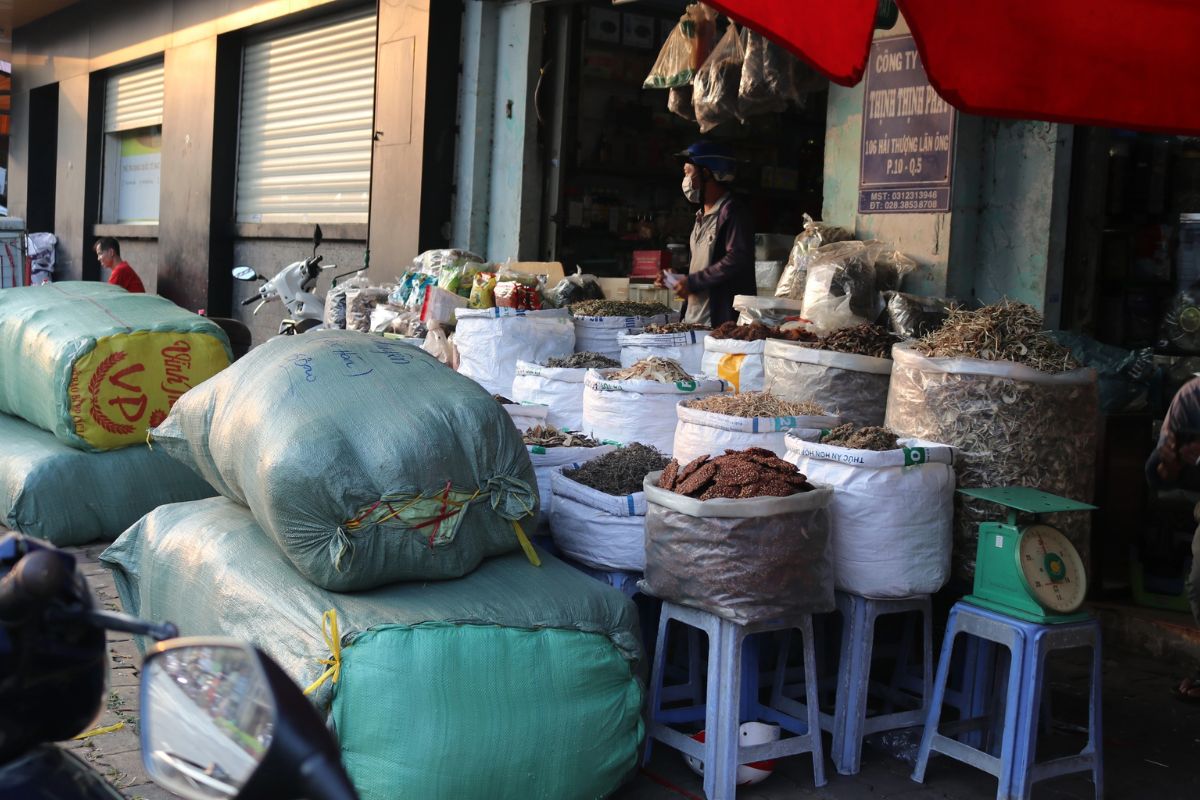
Hai Thuong Lan Ong Street (Source: thanhnien)
Artisans & Local Crafts in District 5 Ho Chi Minh City
District 5 Ho Chi Minh, is more of a “doing” experience than an “observing” experience when it comes to culture. Generations of artisans in quiet corners of family-run workshops ply traditional trades:
Calligraphy: Most active ahead of the Lunar New Year holiday, calligraphers work in front of the pagodas and temples such as Thien Hau Temple and Nghia An Assembly Hall. On red paper, using hand-mixed ink and bamboo brushes, they write auspicious phrases.
Lion Head Making: In small workshops on streets like Lao Tu and Nghia Thuc, workers make lion dance heads out of papier-mâché, fur, and bamboo. Nothing is more important than these for every big holiday, and we witness them again and again throughout Tet and Nguyen Tieu.
Lantern and Embroidery Streets: Drop by Luong Nhu Hoc, Nguyen An, or Phu Dinh to look at handcrafted lanterns, embroidered banners, and Mid-Autumn Festival ornamentations. These alleys come alive in the weeks before festivals.
Incense Making: On some of the calmer residential streets (like Phu Dinh and around Tran Hung Dao), you will run into traditional incense-making families at their poster boards. They make batches of hand-rolled incense sticks for pagodas and festivals with sandalwood, cinnamon, and sacred resins.
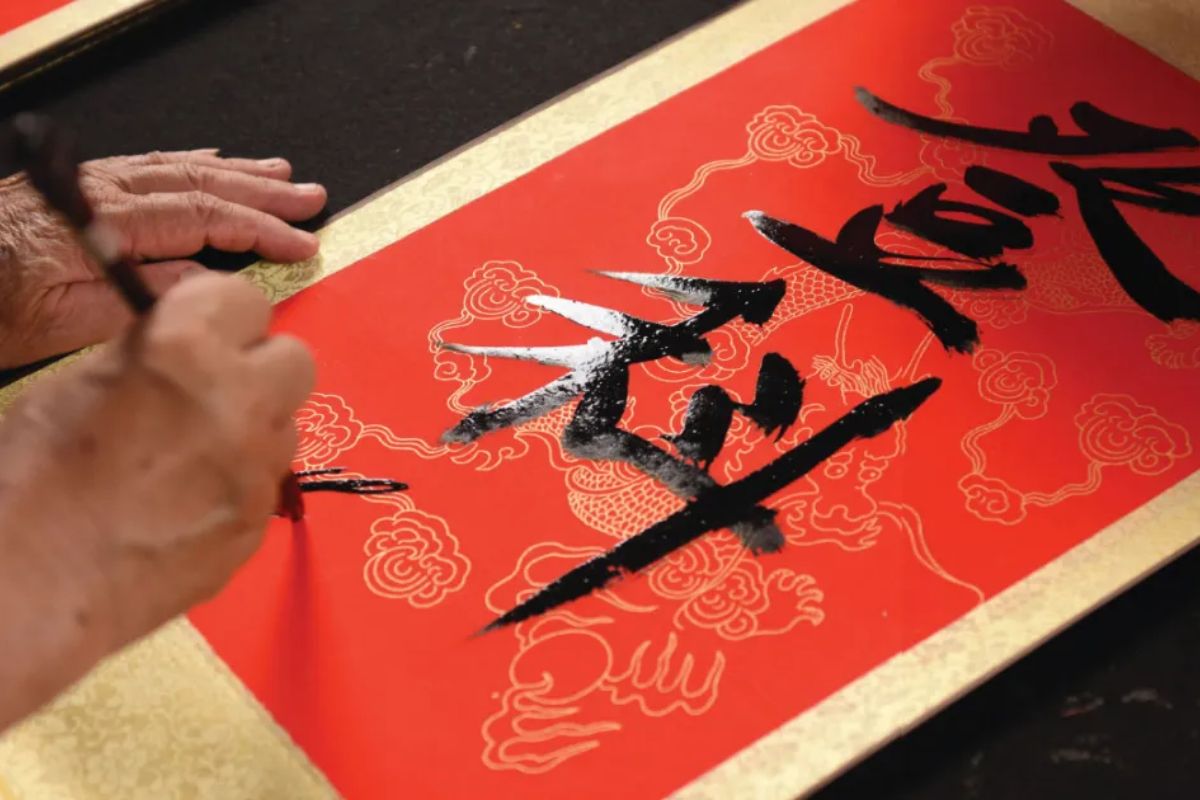
Calligraphy at Hoi Quan Nghia An (Source: HCM360)
Conclusion
It’s not just a place – it’s the cultural heart of Saigon, District 5 Ho Chi Minh City. From holy temples to lively markets and timeless street food, this district is a type of experience you can experience with your senses. Whether you are soaking up the past or discovering history in the making, District 5 Ho Chi Minh City, puts you at the very heart of the city. Pair it with stops in District 1 or Grand Park in Thu Duc, and you will have optimised your visit to highlights Ho Chi Minh City.
FAQ about District 5 Ho Chi Minh City
What to do in District 5?
There’s a lot to discover in District 5 Ho Chi Minh City! Meet local people, and tour sights such as Thien Hau Temple, Nghia An Assembly Hall, and Uncle Ho’s Memorial House. Take a stroll along traditional medicine streets like Hai Thuong Lan Ong, shop at An Dong Market, or try Cantonese food at Tien Phat Dimsum or even Phung Hung Night Market. Do not overlook cultural events such as the Nguyen Tieu Lantern Festival, which illuminates the district in a blaze of light.
What is District 5 called?
District 5 Ho Chi Minh City, is widely known as Cho Lon, which translates to “Big Market" in Vietnamese. It’s the historic Chinatown of Saigon, an enclave of the city populated by those of Chinese-Vietnamese (Hoa) descent with strong cultural, culinary, and spiritual ties that go back over 300 years.
What is in Cho Lon District 5?
District 5 Ho Chi Minh in Cho Lon is full of cultural gems and local activities. Here, you will find ancient temples, Thien Hau is just one, bustling markets like the Binh Tay Market and An Dong Plaza, and streets lined with Chinese herbal medicine shops, traditional craft stores, and sweet soup vendors. Packed with almost 500 years of history, it is one of the best places in the city to discover the rich living heritage of the Hoa people – one of the highlights Ho Chi Minh City.







